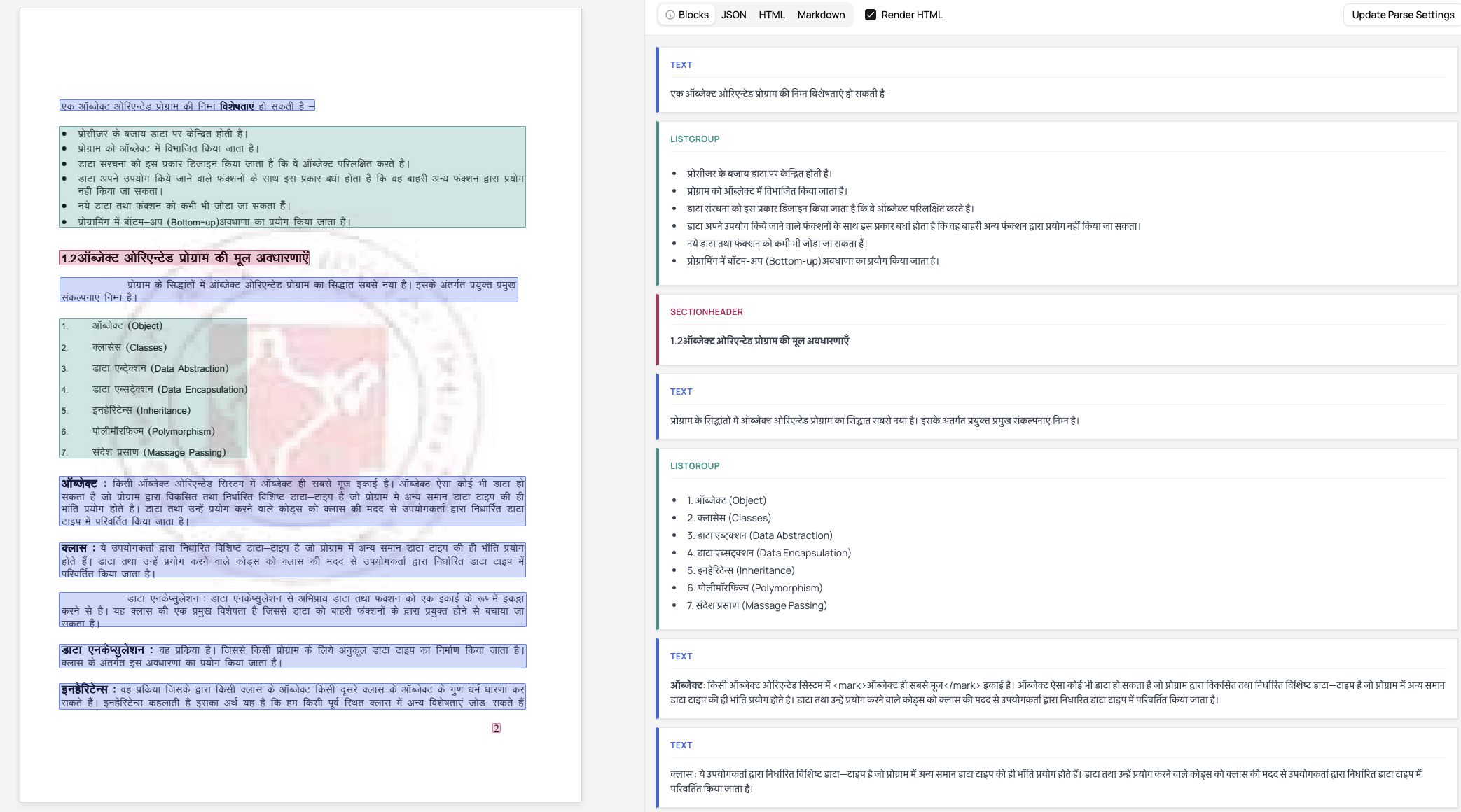Hindi
This example demonstrates Datalab’s ability to parse and structure Hindi-based pdfs. The outputs accurately distinguish section headers, lists, and text blocks, organizing them into labeled “Blocks” derived from Datalab’s JSON output. Each block is tagged with its type — such as LISTGROUP, SECTIONHEADER, or TEXT — allowing downstream systems to reconstruct or analyze document structure programmatically.

Hindi, like many Indic languages, presents unique challenges for document parsing and OCR. Characters often combine through ligatures and diacritics, spacing is context-dependent, and fonts or encodings vary widely across documents. Many traditional OCR systems trained primarily on Latin text fail to capture these nuances, leading to broken tokens, misaligned words, and lost semantic grouping.
Datalab’s multilingual model, trained on diverse script families, preserves text integrity, reading order, and layout relationships even in complex documents. This enables accurate extraction of structured content — such as educational materials, government forms, or research papers — across a global range of languages and formats.
By supporting Hindi and other low-resource languages with the same precision as English, Datalab helps make document intelligence more inclusive, auditable, and globally applicable.






